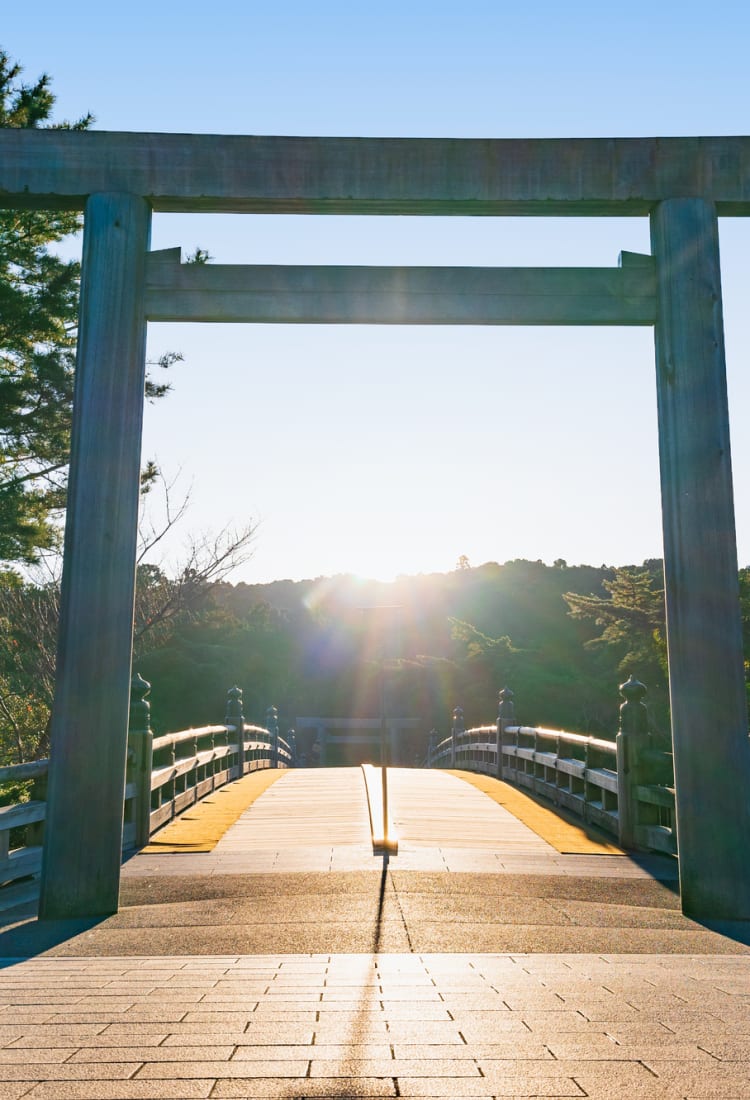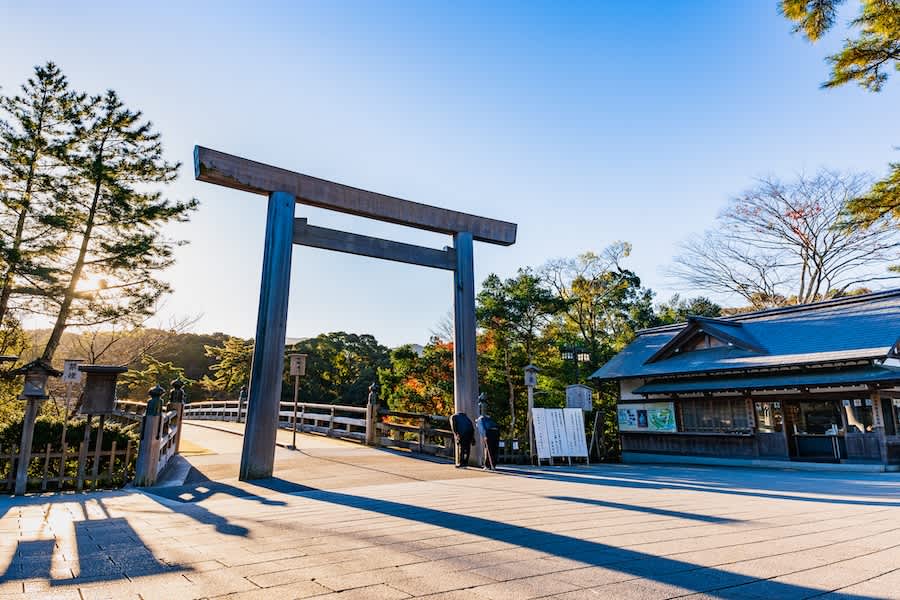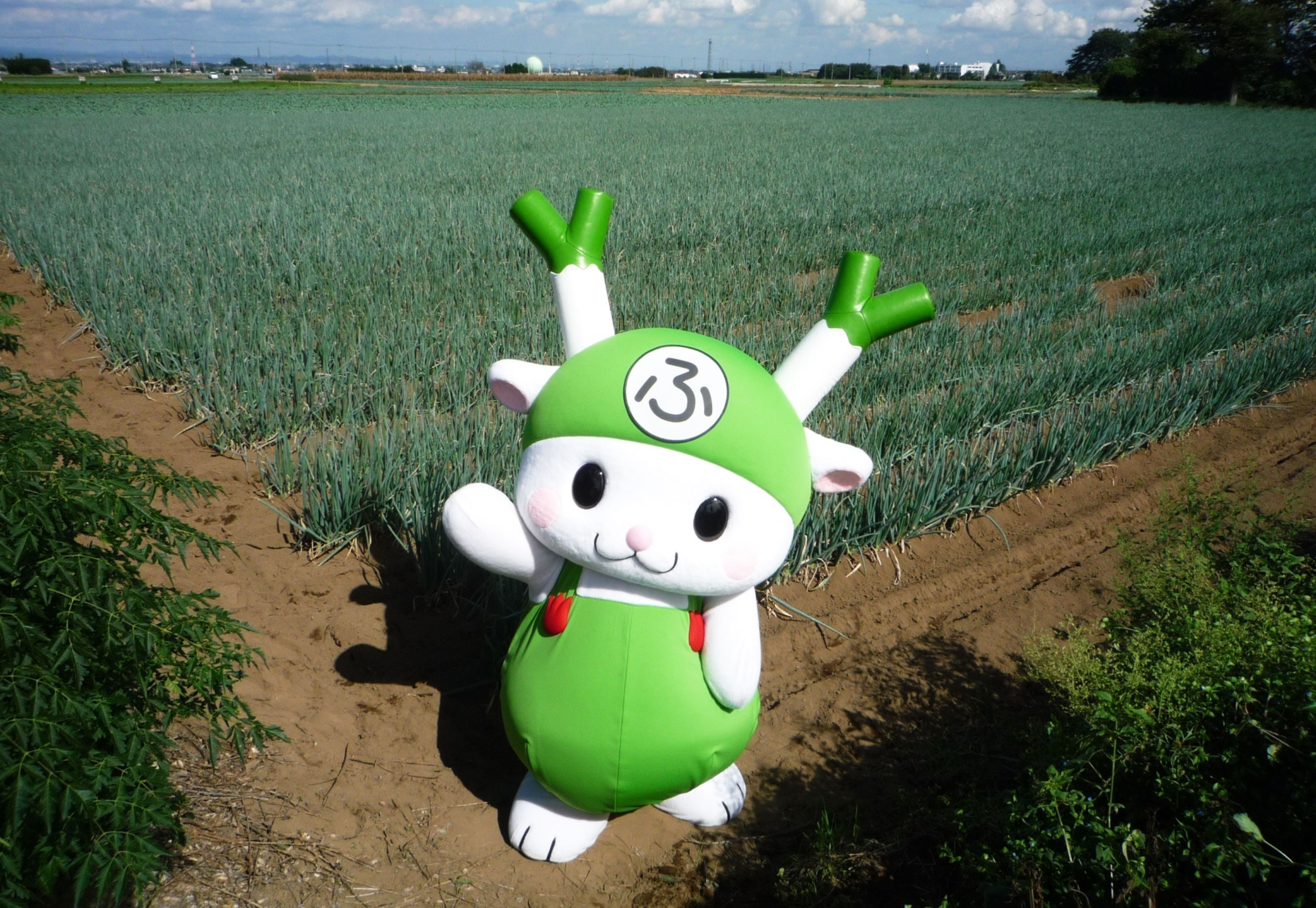
2024.01 Authentic Japanese Experiences in Mie [PR]
Located in the Kinki region of mid-western Honshu, Japan's main island, Mie Prefecture is a cultural heartland, home to the revered Ise Shrine (Ise Jingu). It's a hub where authentic Japanese culture, shaped over centuries, thrives amidst natural abundance. Journey to Mie to experience Japan's elegance, rooted in the richness of its sea and mountains and the quality of ingredients they yield.
Food culture of Ise Shrine and Ise-Shima
Ise Shrine stands as one of Japan's most sacred sites, housing the Kotaijingu (Naiku), the core of Japanese Shintoism, where the sun goddess Amaterasu Omikami has been worshipped for around 2,000 years. Crossing the Ujibashi Bridge leads to Kotaijingu (Naiku), followed by a stroll on a cobblestone path to the Shogu (main sanctuary). The Shogu, an ancient architectural marvel, is secluded behind a restricted enclosure.


Sacred offerings of Ama Hut HACHIMAN
Ise-Shima, with Ise-Jingu Shrine at its cultural heart, is a land of abundant foodstuffs, long celebrated as a region of culinary offerings. Here, sacred offerings (goshinsen) are made to the shrine, including the finest seafood such as abalones, caught by ama divers. 'Ama' translates to 'women of the sea,' and for over 3,000 years, these women have sustainably harvested only what is needed, in line with today's SDGs. Ama divers continue this tradition, free-diving for abalones, sea cucumbers, turban shells, sea urchins, and other sea treasures.
Experience ama culture firsthand at Ama Hut HACHIMAN in Ousatsu-cho, Toba City, with the 'Ama no Goshinsen Course.' After savoring sacred offerings like abalone and Ise Ebi (Japanese spiny lobster), visit a traditional ama hut to enjoy tea and interact with the ama divers.




Katsuo no Tenpaku
The Nakiri area of Shima City has a long tradition of offering katsuobushi (dried bonito flakes) to Ise-Jingu Shrine. In this area, Katsuo no Tenpaku continues the age-old craft of producing authentic katsuobushi. Employing the traditional Tebiyama method with local firewood, they create "Nakiribushi," a smoked bonito highly esteemed in Japan and beyond. Visitors can join a tour of the smokehouse to explore Ise-Shima's rich food culture, its ties to Ise-Jingu Shrine, and the art of making Nakiri’s katsuobushi (advance reservations required). Following the tour, you'll have the chance to savor rice cooked in an earthenware pot and generously topped with katsuobushi ("okaka gohan"), offering a taste of the traditional Japanese breakfast.



Amanemu: The pinnacle of Japanese hospitality
Also situated in Shima City, Amanemu, a resort hotel that incorporates the culture that lives on in Japanese ryokan (traditional inn), nestles atop a hill with stunning views of Ago Bay's coastline. This modern retreat, infused with traditional Japanese elegance, allows you to experience Japanese hospitality. Its dining experience showcases regional specialties that have been served to the imperial family, featuring Matsusaka beef, Ise Ebi, and abalones. In addition to all guestrooms being outfitted with hot spring baths, there are also outdoor hot bathing facilities which allow swimsuits as well as private hot spring baths, inviting you to unwind and indulge in the rejuvenating experience of traditional Japanese bathing in natural, mineral-rich springs.





Pilgrimage mountain paths to sacred sites and the beauty of natural formations
The Kumano Kodo Iseji is a revered pilgrimage route extending from the sacred Ise-Jingu Shrine to the Kumano Sanzan, a trio of grand shrines held in high esteem in Japan. This path traverses several steep mountain passes. In the southern part of Mie Prefecture, travelers can embark on a journey to Kumano City and walk the prayerful path to Matsumoto-toge Pass, part of the World Heritage site "Sacred Sites & Pilgrimage Routes in the Kii Mountain Range." Ideal for beginners, this short trek is adorned with moss-covered stone steps from the Edo period (early 17th century to mid-19th century) and winds through stone-paved paths in a bamboo forest. At the summit of Matsumoto-toge Pass, visitors are welcomed by the life-sized Jizo monument, a guardian deity for travelers.
From Matsumoto-toge Pass, continue to Onigajo. Along this route, a scenic bower offers a sweeping panorama of the coastline and mountains, extending around 22 km (≈72 kft) towards Kumano. Onigajo, a striking rock formation, has been shaped by the forces of nature into a breathtaking sight. At Senjojiki, an ideal spot for photography enthusiasts, you can gaze upon the sea and sky through a gap in approximately 15 m (≈50 ft) high rocks, dramatically divided into upper and lower segments. A stroll along the 1 km (approximately 3.28 kft) long promenade at Onigajo is also highly recommended.


Sekijuku: A Japanese townscape from the days of the samurai
Sekijuku, nestled in Kameyama City in Mie Prefecture's northern region, is a historic post town on the Tokaido Road, the ancient route linking Tokyo (then Edo) and Kyoto (Kyo). This town was once a bustling hub of travelers heading to Ise and beyond. Lined with about 200 traditional wooden townhouses from the Edo to the Meiji period (1868-1912), Sekijuku offers a glimpse into Japan's storied past. Renting a kimono made of Ise cotton, a traditional Mie Prefecture craft, at Kimomo-do and wandering through the town can transport you back in time. Don't miss trying the renowned “seki-no-to" confectionery from Fukawaya, a traveler's favorite back in the day, and Maedaya Seika’s “shiratama," a delightful dumpling rice cake filled with sweetened bean paste.




Travel to Mie on the Sightseeing Limited Express “Shimakaze”
Begin your journey to Mie Prefecture aboard Kintetsu's luxurious Sightseeing Limited Express “Shimakaze." Opt for a premium seat or one of two types of private compartments for three to four passengers in the observation car, featuring a vast glass facade for an impressive panorama, ensuring a supremely comfortable and relaxing travel experience. The café car, where you can sip tea while gazing at the scenery through the train windows, provides another unique aspect of the journey. The Shimakaze connects Osaka, Kyoto, and Nagoya to Kashikojima Station in Shima City, with routes passing through Iseshi Station and Toba Station. The entire journey takes approximately 2 to 2.5 hours.

How to get there
Mie is easily reachable through two airports: Chubu Centrair International Airport and Kansai International Airport. For those traveling from Osaka, Kyoto, or Nagoya, limited express trains provide convenient connections. Additionally, from Tokyo, visitors have the option of taking the Shinkansen bullet train via Nagoya or choosing an overnight express bus for their journey.
Related Links
Mie Prefecture Official Website
|
|
|
|
|
Ise Jingu |
Ama Hut HACHIMAN |
Katsuo no Tenpaku |
|
WEB:https://anything-from-japan.com/food-beverages/seafood/katsuobushi-bonito-flakes |
Amanemu |
Kumano Kodo Iseji |
Sekijuku |
The Sightseeing Limited Express "Shimakaze" |




















































